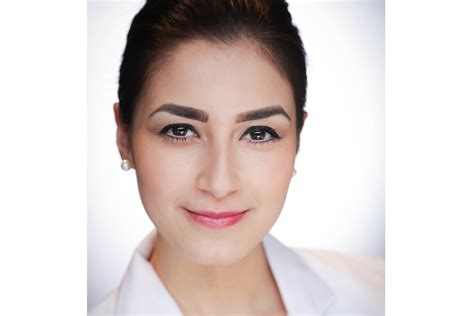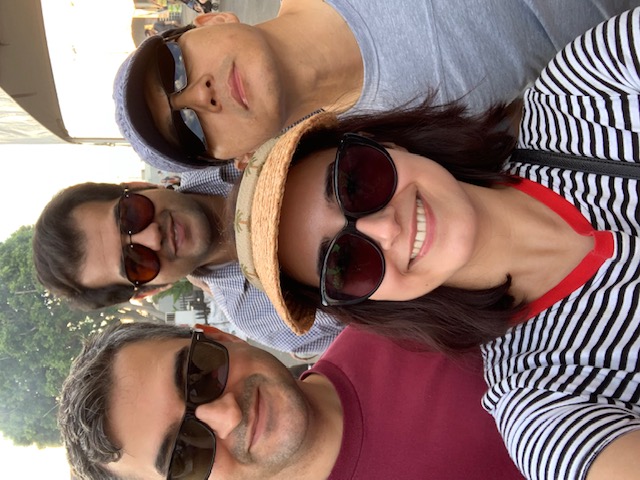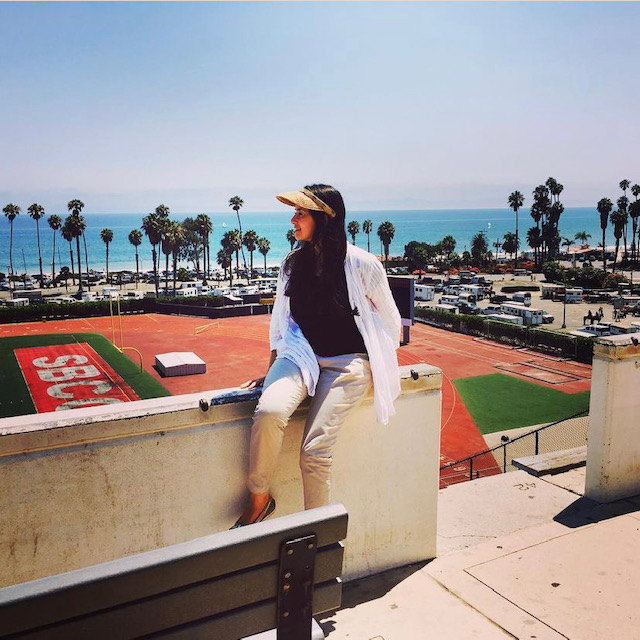“Been in America”: Interviews with German researchers in the USA and Canada

Dr. Tanja Khosrawipour
© Privat
(08/19/21) Through its fellowship program and the Walter Benjamin Program, the DFG supports early-career researchers in their academic careers by funding an independent research project abroad and, since 2019, in Germany too. A large proportion of these fellowships are awarded in the USA and to a lesser extent in Canada, thereby reflecting the belief still prevalent in many disciplines and in the life sciences in particular, that for a career in research it is helpful to have “been in America.” In a series of talks, we aim to give you an impression of the range of DFG funding recipients. In this edition we take a look at who is behind funding number KH 347.
DFG: Dr. Khosrawipour, congratulations on your appointment to Associate Professor last year and thank you for taking the time to talk to us. You’re a surgeon at the University Hospital in Düsseldorf and in your CV it says you have three mother tongues – Persian, German and English. Two of these can be readily accounted for, but not so much the third. Could you give us some background?
Tanja Khosrawipour (TK): Yes, gladly, but first of all, thank you very much for your interest, and of course for the research grant awarded to me by DFG, which has enabled me to pursue projects in California that are now proving very helpful for my career in Germany. My parents came to Germany after the Iranian revolution, where my father then studied electrical engineering at RWTH Aachen. I was born in Germany and have spoken German and Persian since early childhood. As a result of spending several years in California during my school and university years and as a postdoc, I also have native proficiency in English. In today’s globalized world, multilingualism is of great importance – more than anything else, it opens up horizons. As Federico Fellini said many years ago, “A different language is a different vision of life.”
DFG: You were appointed to Associate Professor last year at the age of 30. You skipped two grades at upper secondary school and completed high school at the age of 17 – with a grade that enabled you to study medicine, despite having spent a year abroad. Didn’t you sometimes get very bored during your school years?
TK: In our family, high priority was attached to education and I always derived great joy from classes at school. During secondary school I realized I was capable of a higher level of achievement, which resulted in me being moved up a class in two consecutive years. Although I lacked two years of schooling compared to other students, I was able to catch up quickly and excellent grades in my school-leaving examination. Of course, there were boring situations sometimes, but in the upper grades of secondary school in particular we were able to choose subjects according to our interests. Here I opted to specialize in English and French. I love French literature, classical and absurdist theatre – I’m particularly passionate about plays by Eugene Ionesco.
DFG: The role your family has played in your career has been somewhat larger than “normal” to date, is that correct?
TK: I would say so, yes. My family has always supported me in all my endeavours, giving me the courage to set myself very ambitious goals and pursue these diligently and single-mindedly. My parents have given me a wealth of educational opportunities and encouraged me to make the most of them. I was taught French at home before I started primary school, so I’ve been speaking French since my earliest childhood. My language skills were a great help during my school years: at the age of 16 I came first in a French reading contest organized by Bochum Chamber of Industry and Commerce. That was something I was particularly proud of because I was up against children who were from French families. Apart from that, my parents attached great importance to me being able to express myself artistically. I took painting and watercolor classes and learned to carve sculptures and busts out of soapstone. My grandfather and uncle – both artists and sculptors – nurtured my talent early on, honing my powers of perception and introducing me to oil and acrylic painting as well as calligraphy.
These manual skills now benefit me in my surgical work, too. My parents gave us children the support we needed for above-average school careers and enabled us to spend time abroad on many occasions. After I graduated from secondary school, we all moved to Santa Barbara so I could go to college there. I studied biology and chemistry in Santa Barbara for two years, and I was also closely involved in university politics along the way. In fact I was president of the student senate there and in that capacity I also had the honour of giving an introductory speech for the new college president.

Among colleagues
© Privat
DFG: You went there previously on an exchange semester during secondary school, didn't you?
TK: Yes, that was a little further south. In eleventh grade I was at a high school in Woodland Hills, which is technically still part of Los Angeles. Again, this was only possible thanks to the support of my family, and I’m very grateful for this.
DFG: After completing your doctorate you went back to the USA, this time to Irvine in Orange County, south of Los Angeles. How did that come about?
TK: Out of sheer curiosity. After I’d finished my dissertation, scientific questions arose during my time as an assistant physician at Marienhospital Herne which I hoped to answer by doing a research stay in the USA. After an intense search, I came across Professor Alessio Pigazzi’s group at the University of California in Irvine. Professor Pigazzi is a world-renowned expert in the field of peritoneal metastasis. After getting to know his lab and the working group, I applied to the DFG for a research grant. Since it took more than a year for the funding to go through, I initially used my own savings as a stop-gap.
DFG: In the USA, you recently conducted research into a treatment technique for peritoneal metastasis and wrote in your proposal that the aim was to improve palliative care in such cases, i.e. not to achieve a curative therapy but to provide care so as to support sufferers until they pass away. Where do you believe your responsibility ends and that of the pastor begins?
TK: Peritoneal metastasis is a serious disease with a low life expectancy. Unfortunately, the treatment options that do exist are extremely limited. For a few patients, there is the option of complete tumour removal followed by lavage of the abdominal cavity by means of heated chemotherapy. This procedure is not only highly complex, but also involves a high risk of morbidity and mortality risk and is only considered for very localized tumour involvement. This leaves most patients the sole option of palliative chemotherapy or other symptomatic therapies. For some years now, a new palliative procedure has been increasingly used – so-called Pressurized Intraperitoneal Aerosol Chemotherapy (PIPAC). In this approach, a chemoaerosol is dispersed into the abdominal cavity following laparotomy with the aim to impact the peritoneal surface. This technique uses a minimally invasive approach with a micropump, enabling specifically targeted treatment. The aim is to achieve local tumour remission and reduce the development of abdominal fluid. Interestingly enough, the clinical application of this procedure was first developed and implemented at Marienhospital in Herne – the very institution at which I established my academic career. I was able to see how PIPAC was implemented in the clinical setting in a bench-to-bedside manner.
In young patients in particular, the sense of despair can be huge following diagnosis of peritoneal metastasis. At the same time, there is an enormous sense of gratitude for every second they are able to live longer. This is why we have patients who travel a very long way in some cases – we’ve treated patients from Germany, Europe, the USA and even Australia. But despite the clinical application of this method, many experimental aspects remained unresolved at the time; in particular, there were no in vivo animal studies on the benefits and risks of PIPAC. For this reason, I decided to design an in vivo animal project to objectively investigate the possibilities and benefits of PIPAC as well as the risks involved, and use this knowledge to further improve patient care.
DFG: The subject of your research project in California was small animal experimental studies on the treatment of intestinal tumours using the PIPAC procedure. What have you been able to learn and how will this help you in the treatment of other tumours in the abdominal cavity?
TK: Based on my research, I was able to confirm that PIPAC is a sound, innovative procedure that can serve as a basis for further therapeutic developments in the field of peritoneal metastasis. However, the development of a near-patient small animal model with peritoneal metastasis for further investigation of PIPAC still remains a challenge. In future, PIPAC should ideally be studied using a xenograft tumour model, which takes us to the very frontiers of current academic research. A standardized model would have to be developed for the rat.
DFG: Does your vocation lie more in research or more in surgery, i.e. the craft?
TK: I think the two go hand in hand. As a doctor, patient care is my first priority, of course. Even as a little girl I wanted to become a surgeon and help people in emergency situations by applying my knowledge and craftsmanship. It has always been my dream to provide humanitarian aid – preferably as a member of Doctors Without Borders. Surgery is a diverse and multifaceted discipline; in the operating theatre you learn to work calmly and level-headedly, as well as understanding what it means to put your own needs aside to fully concentrate on your patient. My role model here is my superior and chair of the surgical department of the university hospital in Düsseldorf, Professor Wolfram Trudo Knoefel – one of the great surgeons of our time. But I see myself just as much as a scientist, too – and I believe research is the key to improving the lives of our patients. Being able to conduct research is an enormous privilege and I work every day to develop and improve new therapies with the aim of being able to treat peritoneal metastasis more effectively if not eliminate the disease entirely. My patients are my source of motivation here: I want to be able to give them courage and hope on their difficult path. But if I hadn’t become a doctor, I could well imagine having become something completely different. I was very enthusiastic about French language and literature during my school years – because of my proficiency in multiple languages, I could easily have imagined a career as a simultaneous interpreter or writer.

In Santa Barbara
© Privat
DFG: You’ve spent more than five years of your life in various places along the coast of Southern California and about the same amount of time in the two Ruhr Valley towns of Bochum and Herne, having grown up in Bochum. Where do you prefer to be and why?
TK: If you take a look around Santa Barbara or Laguna Beach, you immediately understand why they talk about the Californian Riviera. Santa Barbara in particular is a place of breathtaking beauty and I consider myself lucky to have spent several years there. The weather, the landscape and the natural setting are the reason why many celebrities have been drawn there, too, most recently Harry and Meghan. But California occasionally seems like a holiday or amusement park to me, and sometimes I miss the seriousness that I know from the Ruhr Valley.
But I do believe that if you go there once, especially at a young age, you’ll find your way back again at some point. What’s more, my best friend is from Santa Barbara, so that does mean I go there regularly. The Ruhr Valley is also a special place for me. This is where real life happens, i.e. the grey cold in winter, the gruff and direct demeanour of many people here, but also the long daylight in the summer and the numerous beautiful spots such as Lake Kemnade and Blankenstein Castle. Düsseldorf itself where I work now is much more elegant and prosperous than the Ruhr Valley region, of course. But neither in Bochum or Düsseldorf will you find an inn designed by Charlie Chaplin as a refuge from the stress of Hollywood – the Montecito Inn in Santa Barbara is one of a kind.
DFG: Where do things go from here for you in Düsseldorf?
TK: I was able to obtain my Associate Professorship at the age of 30 last year at Heinrich Heine University in Düsseldorf – in a subject as complex and competitive as surgery. This makes me one of the youngest women in Germany to have achieved this level of accomplishment. The next logical step for me would be a full professorship and further university work. For the future, I intend to continue setting myself ambitious goals and then work tirelessly to achieve them. If there’s something important that I’m taking back from the US, in addition to lots of memories and beautiful images, it is perhaps this insight: there’s no such thing as failure, only learning. Or as they say there, “The sky's the limit.”
DFG: Might that include having your own family one day?
TK: That would be nice and is certainly one of my goals.
DFG: In that case we would like to thank you for this informative and entertaining interview, and we wish you all the very best in pursuing both your professional goals and your personal dreams.